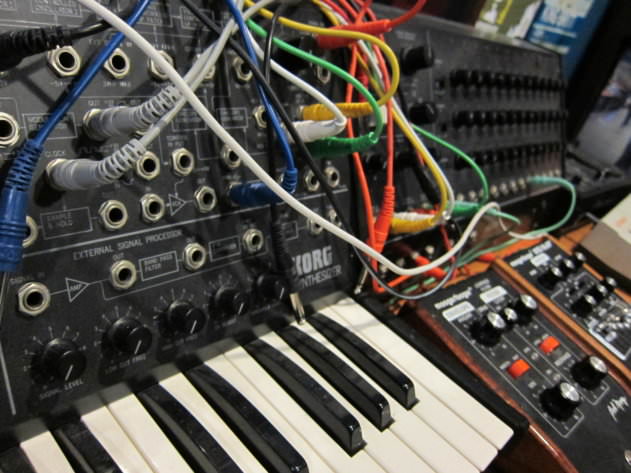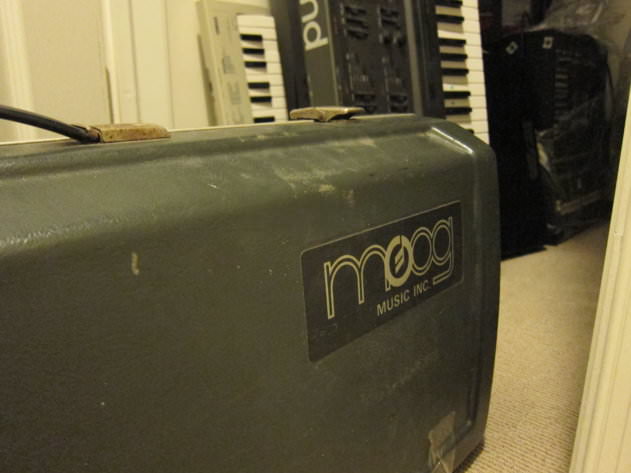We chat to the electronic music auteur about how sci-fi movies inspired his recent EP on Hyperdub, why he deliberately limits his options in the studio and how avant-garde composers influence his work.

King Britt has been one of the most prolific artists in electronic music since his first release – 1990’s ‘Tribal Confusion’
, released on Strictly Rhythm in collaboration with former business partner Josh Wink. Since then, he’s produced music under numerous aliases, from his more traditional house output as Scuba through to his improvisational, hip hop-tinged, jazz-inspired, vocal-led output with Rucyl as Saturn Never Sleeps.
Britt’s recent Fhloston Paradigm EP on Hyperdub marked another high point in his career, combining a retro sci-fi inspired aesthetic with contemporary production values. From a technical standpoint, the EP’s extensive use of vintage analogue gear and foreboding arrangements will draw comparisons with Vangelis’s classic Bladerunner score and John Carpenter’s soundtrack work, but the release delivers a distinct take on the established tropes thanks to careful sound design, painstaking editing and – most importantly – subtle melodic composition.
We spoke to King (that’s his real name, by the way) about his approach to making music and the ways in which the equipment itself informs the sound of his projects.
Attack: Let’s start by talking a little about the Fhloston Paradigm EP, which is one of the most interesting pieces of music we’ve heard this year. Can you tell us a little about the decision to limit yourself to a few pieces of analogue gear for that record?
King Britt: Well, it’s interesting how it all happened. I collect synths, so I switch them in and out of my setup every few months. On this occasion, around 2010, I set up my Moog Sonic Six and Boss DR-110 to make little rhythm tracks. I was learning to run the drum machine through the Moog processing; there’s a little mixer on the Sonic Six and you can get some really raw-sounding things.
The first EP was Fiction Science on the Saturn Never Sleeps label. A combination of the Moog/Boss rhythm tracks and a bit of 808 and Roland JX-3P.

Korg MS-20, SQ-10 and a selection of Moogerfoogers
Kode9 put one of the tunes on his Essential Mix and I sent him an email thanking him, then in late 2011 I sent some tunes that he may dig – not really for Hyperdub, but just some he may like. He loved them but definitely wanted ‘Chasing Rainbows’ for the EP, so it all worked out. I then fine-tuned the other songs using the Korg quad pad and Moogerfoogers.
The idea of restricting yourself to a limited set of tools is so interesting these days, seeing as most people are using software which offers almost limitless options…
Nowadays there are so many options, especially with software, that you find yourself spending more time on finding the right plugin rather than doing the music.
So when I did the Adventures In Lo-Fi album, which is mainly hip hop, I only wanted to do it the way I did back in the day – a stack of wax and an MPC. I’d close my eyes and grab a few albums every day for a week, which gave a certain randomness to the creative sampling process, then see how many tracks I could do from those stacks. It created sample pairings that never would have consciously happened, thus creating a very clever sonic palette.
Using this approach of limitation, you tend to shape the sound of the project because you only can use the sounds of those things you’ve chosen. For Fhloston, choosing three main synths actually branded the sound of the project and made all the songs cohesive. I do it with software too. Only these plugins, or what have you. I’m now doing a series of sample packs which are textures used as foundations for the start of projects.
Are they just for your own use?
No, I have a series that will be available exclusively through Sounds To Sample from November 16th. The series is called Fragments and they’re pieces of glitchy goodness that I created from scratch for producers and DJs. I used a different process to make each volume and they’re all Ableton-ready.

Moog Sonic Six
Sounds good. Going back to the restricted sonic palette, do you think that approach has a big impact on the way you compose the music?
Absolutely. More so with synths because they all do something distinctive. Like the way the Mono/Poly has four oscillators and each note in a chord has one oscillator, so you get things that you may never get with another keyboard.
Or how using only CV and gate gives you a whole different swing than MIDI due to lag time and trigger sequences.
Have you taken a similar approach with other projects, sitting down and deciding on a set of tools before you actually make any music?
I always do now. Always. With my Soul Litchfield project for Saturn Never Sleeps, it’s all Minimoog, JX-3P and MPC into Ableton using the APC40. It totally changed how I composed. I was performing more in a live way of thinking because the APC is essentially an instrument if used right.
You’re a big Ableton fan?
It’s the best program to ever exist. It really allowed me to break out the synths and incorporate them quickly and efficiently into a MIDI setup. I also love the Moog MP-201
pedal, which I helped consult on initially. To be able to have four MIDI to CV triggers to different synths is mind-blowing.

06.23 PM
Very, very, VERY cool! Some lovely hardware in this feature, and some really diverse styles and ideas. What an inspiring artist!
03.30 PM
good intervew..King’s amazing!
Friday is Noverber 2nd btw
03.34 PM
Oops. Well spotted. Thanks!
05.35 PM
As always a great interview – thanks
Attack